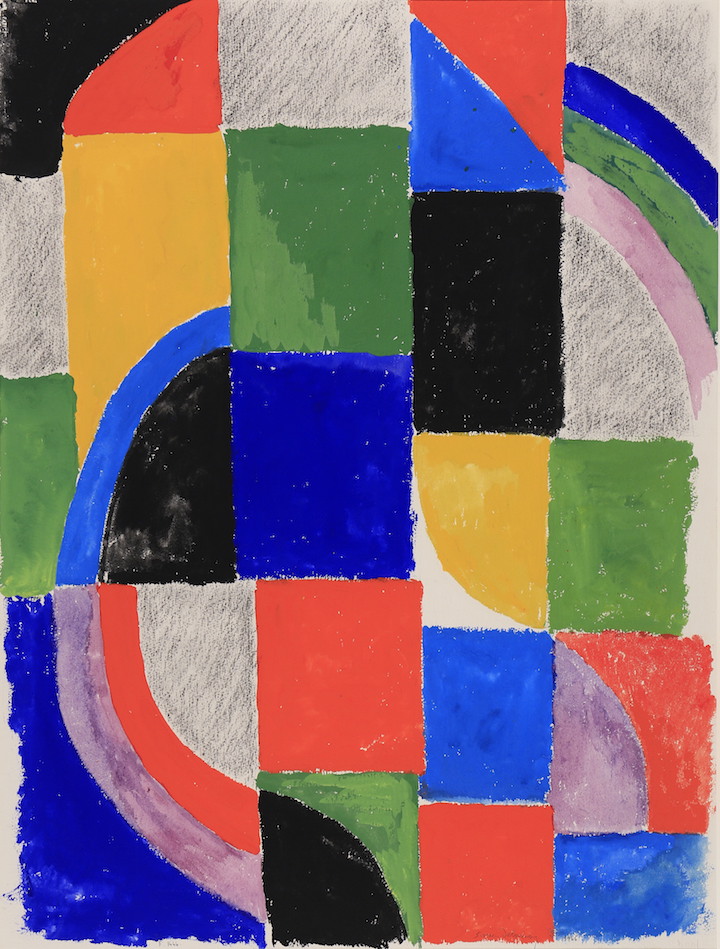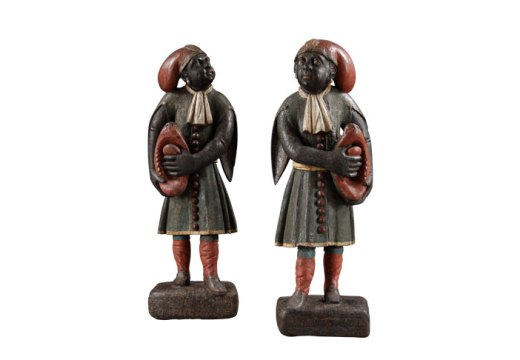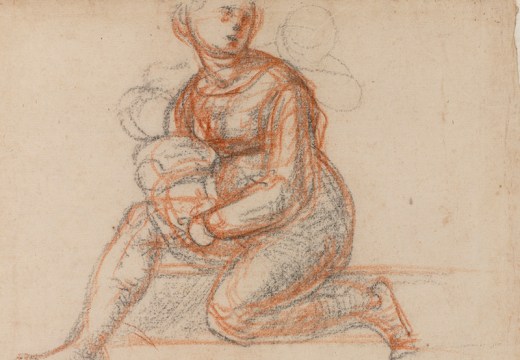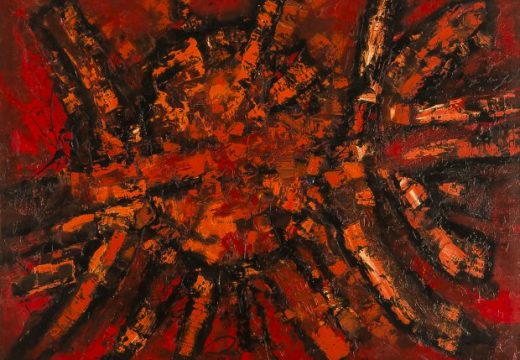John Berger wrote in 1953 that ‘For the artist drawing is discovery’. It is, Berger elaborates, ‘the actual act of drawing that forces the artist to look at the object in front of him, to dissect it in his mind’s eye and put it together again.’ A walk around Paris’s Salon du Dessin, which runs from 22–27 March, reveals that the use of drawing as a tool, as an exercise, and as a meditation, has changed remarkably little since the Renaissance. It is the most instinctive and timeless of mediums.
For the past quarter of a century, drawing devotees have descended on this intimate fair inside the Palais Brongniart in the Place de la Bourse; the Salon is a site of pilgrimage for this collecting community. It is also the flagship of Paris’s Semaine du Dessin, a week of auctions and exhibitions staged across the city. Within the fair is a loan exhibition of 40 works acquired over the last decade by Paris’s École des Beaux-Arts, which celebrates its bicentenary this year. The Musée Girodet in Montargis is the fair’s charity beneficiary following flooding in the museum last June which damaged hundreds of works; Anne-Louis Girodet’s preparatory drawings for his 1806 Salon painting, Scene of the Flood, will be on show at the fair.
The Salon always hosts an annual academic symposium, and the 2017 edition is titled ‘From David to Delacroix II’ (22 March). In addition, 20 museums and foundations across Paris will offer special access to their collections of drawings. Among the highlights is the opening of the Domaine de Chantilly’s new graphic arts galleries, set across five newly restored period rooms – never before open to the public. The debut exhibition is ‘Bellini, Michelangelo, Parmigianino: The Blossoming of the Renaissance’ (24 March–20 August).

The Sculptor’s Atelier, an Allegorical Scene (c. 1702), Giovanni Battista Foggini. Maurizio Nobile, €14,000
The Salon is still a very French affair; some 60 per cent of the 39 exhibitors are home grown. But this year, China is represented for the first time through the participation of Hadrien de Montferrand, who founded his Beijing gallery, specialising in contemporary Chinese drawing, in 2009; he opened a second space in Hangzhou in 2013. At the Salon, de Montferrand will exhibit works by realist painter Chen Han and the portraitist Mao Yan. Other exhibitors making their debut include Danielle Cazeau of Reginart Collections, a modern and contemporary specialist based in Geneva, and Michel Descours, whose stand is dedicated to four 18th- and 19th-century artists from his home city of Lyon. These are young dealers, as is Old Master drawings specialist Nathalie Motte-Masselink, who opened her gallery in the rue Jacob six years ago. If proof were needed that the Old Master trade is attracting fresh blood, look no further than the drawings dealers; they often start out in works on paper which are more financially accessible.
Bologna-based Maurizio Nobile, also exhibiting for the first time, brings an allegorical scene of a sculptor’s atelier by the Florentine sculptor and architect Giovanni Battista Foggini (1652–1725). In Foggini’s deft hand, the chalk, pen and brown ink skip across the page, with a lightness of touch characteristic of Florentine drawings from this period. The work is from an album of 79 drawings from the collection of the Florentine Pandolfini family; 58 are by Foggini and were published by the gallery for the first time last year.
A master of the allegorical two centuries later was leading French symbolist painter Gustave Moreau (1826–98). The Persian Poet is typical Moreau. In both subject matter and style it is inspired by the Persian miniatures so beloved by the artist; the muse, envisaged as an angel, descends to provide inspiration to the poet on horseback. It is shown at the Salon by Bertrand Talabardon and Bertrand Gautier of the Talabardon & Gautier Gallery, which concentrates particularly on 19th-century French works (although at last year’s TEFAF Maastricht the pair unveiled a Rembrandt painting that they had bought unattributed at auction).

Saint Francis of Assisi (1842), Jean-Auguste-Dominique Ingres. Galerie de Bayser, €40,000
Some of the galleries have personal connections with the artists they show, among them the Swiss dealer François Ditesheim of Ditesheim & Maffei Fine Art. He met the Slovenian artist Zoran Mušič (1909–2005) in 1979 in London when the artist was still contracted to the Galerie de France. An admirer of his work, Ditesheim met Mušič again at the Venice Biennale in 1980 and exhibited him for the first time in his gallery in Neuchâtel, Switzerland, in 1981 – the first of 10 subsequent solo shows. They were close collaborators and friends until the artist’s death in 2005. During the Salon, Ditesheim will devote the majority of his stand to Mušič, exhibiting around 30 of his drawings, nearly all direct from the studio. The 1989 pencil drawing Città is a rare depiction of Paris, and as always with Mušič’s works, the forms emerge subtly out of the densely worked graphite scrawl.
Louis de Bayser, chairman of the Salon and also an exhibitor is, predictably, an exponent of drawings. He is keen to point out that they don’t always play second fiddle to paintings, citing the drawing by Raphael dated to around 1519–20 that sold for £29.7m at Sotheby’s London in 2012, and Munch’s 1895 pastel of The Scream, which sold for $120m at Sotheby’s New York also in 2012. De Bayser will show a masterly and hitherto unpublished drawing of Saint Francis of Assisi by Jean-Auguste-Dominique Ingres (1780–1867), previously catalogued as 15th-century German School when it appeared at auction in Switzerland but since reattributed by Galerie de Bayser. It is one of the nude studies made by Ingres for each of the 12 saints in the stained-glass window that he was commissioned to produced by Louis-Philippe in 1842 for the Saint-Ferdinand Chapel in Neuilly, in memory of the king’s eldest son, Prince Ferdinand-Philippe d’Orléans.

Rythme couleur n°1444 (1966), Sonia Delaunay. Galerie de la Présidence, in excess of €100,000
If the selection so far is a little monochromatic, take Sonia Delaunay’s vibrant Rythme couleur n°1444 (1966) as an antidote. Exhibited by Galerie de la Présidence – a Parisian operation run by mother and daughter team Françoise Chibret-Plaussu and Florence Plaussu – this gouache shows a mature Delaunay exploring her lifelong preoccupation: how the juxtaposition of different colours and shapes create rhythm, form and movement across a flat sheet of paper.
With the Salon du Dessin now in its 26th edition, the Société du Salon du Dessin – organisers of the Salon – announced late in 2016 that they are expanding with a second, more diverse fair. The inaugural edition of Fine Arts Paris will run from the 8–12 November in the same venue, and will see 30 exhibitors present paintings, sculptures and drawings from the 16th century to the present day. It is to be hoped that this new fair will foster the same loyal commitment from its participants as the Salon du Dessin.
Salon du Dessin runs at the Palais Brongniart, Place de la Bourse, Paris, from 22–27 March.
From the March issue of Apollo: preview and subscribe here.
Unlimited access from just $16 every 3 months
Subscribe to get unlimited and exclusive access to the top art stories, interviews and exhibition reviews.














![Masterpiece [Re]discovery 2022. Photo: Ben Fisher Photography, courtesy of Masterpiece London](http://www.apollo-magazine.com/wp-content/uploads/2022/07/MPL2022_4263.jpg)
It’s time for the government of London to return to its rightful home